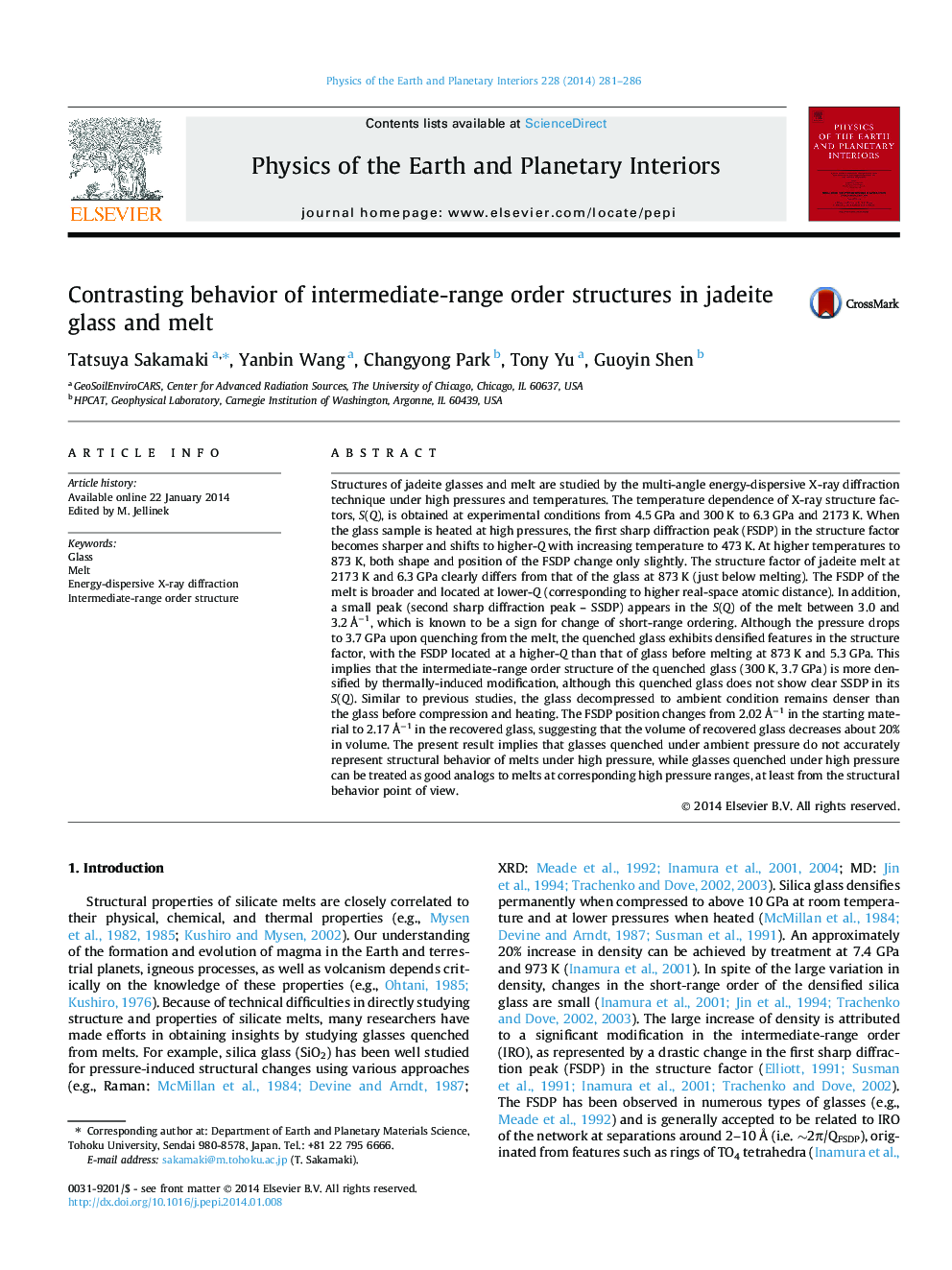| Article ID | Journal | Published Year | Pages | File Type |
|---|---|---|---|---|
| 4741601 | Physics of the Earth and Planetary Interiors | 2014 | 6 Pages |
Structures of jadeite glasses and melt are studied by the multi-angle energy-dispersive X-ray diffraction technique under high pressures and temperatures. The temperature dependence of X-ray structure factors, S(Q), is obtained at experimental conditions from 4.5 GPa and 300 K to 6.3 GPa and 2173 K. When the glass sample is heated at high pressures, the first sharp diffraction peak (FSDP) in the structure factor becomes sharper and shifts to higher-Q with increasing temperature to 473 K. At higher temperatures to 873 K, both shape and position of the FSDP change only slightly. The structure factor of jadeite melt at 2173 K and 6.3 GPa clearly differs from that of the glass at 873 K (just below melting). The FSDP of the melt is broader and located at lower-Q (corresponding to higher real-space atomic distance). In addition, a small peak (second sharp diffraction peak – SSDP) appears in the S(Q) of the melt between 3.0 and 3.2 Å−1, which is known to be a sign for change of short-range ordering. Although the pressure drops to 3.7 GPa upon quenching from the melt, the quenched glass exhibits densified features in the structure factor, with the FSDP located at a higher-Q than that of glass before melting at 873 K and 5.3 GPa. This implies that the intermediate-range order structure of the quenched glass (300 K, 3.7 GPa) is more densified by thermally-induced modification, although this quenched glass does not show clear SSDP in its S(Q). Similar to previous studies, the glass decompressed to ambient condition remains denser than the glass before compression and heating. The FSDP position changes from 2.02 Å−1 in the starting material to 2.17 Å−1 in the recovered glass, suggesting that the volume of recovered glass decreases about 20% in volume. The present result implies that glasses quenched under ambient pressure do not accurately represent structural behavior of melts under high pressure, while glasses quenched under high pressure can be treated as good analogs to melts at corresponding high pressure ranges, at least from the structural behavior point of view.
